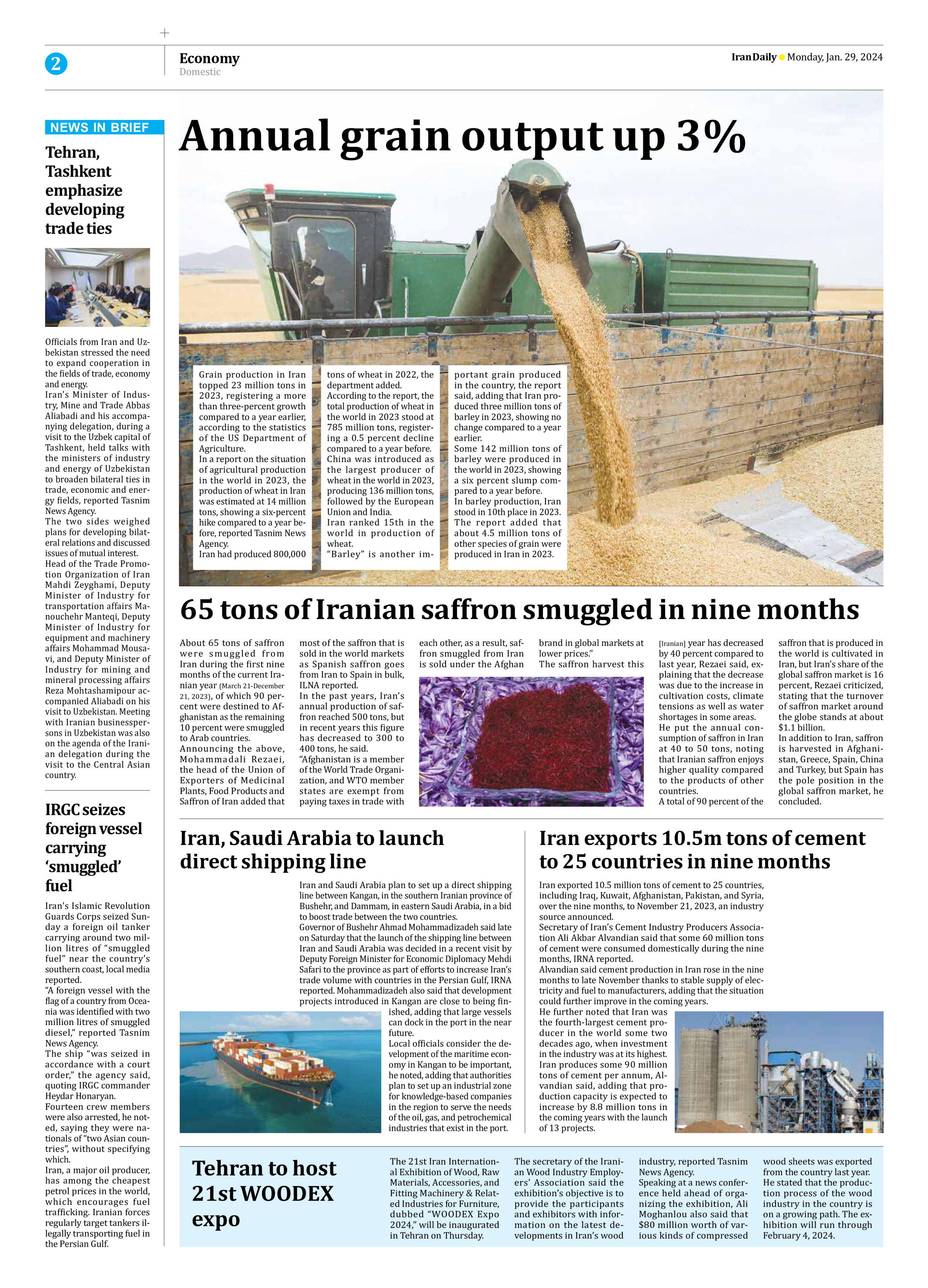
65 tons of Iranian saffron smuggled in nine months
About 65 tons of saffron were smuggled from Iran during the first nine months of the current Iranian year (March 21-December 21, 2023), of which 90 percent were destined to Afghanistan as the remaining 10 percent were smuggled to Arab countries.
Announcing the above, Mohammadali Rezaei, the head of the Union of Exporters of Medicinal Plants, Food Products and Saffron of Iran added that most of the saffron that is sold in the world markets as Spanish saffron goes from Iran to Spain in bulk, ILNA reported.
In the past years, Iran’s annual production of saffron reached 500 tons, but in recent years this figure has decreased to 300 to 400 tons, he said.
“Afghanistan is a member of the World Trade Organization, and WTO member states are exempt from paying taxes in trade with each other, as a result, saffron smuggled from Iran is sold under the Afghan brand in global markets at lower prices.”
The saffron harvest this [Iranian] year has decreased by 40 percent compared to last year, Rezaei said, explaining that the decrease was due to the increase in cultivation costs, climate tensions as well as water shortages in some areas.
He put the annual consumption of saffron in Iran at 40 to 50 tons, noting that Iranian saffron enjoys higher quality compared to the products of other countries.
A total of 90 percent of the saffron that is produced in the world is cultivated in Iran, but Iran’s share of the global saffron market is 16 percent, Rezaei criticized, stating that the turnover of saffron market around the globe stands at about $1.1 billion.
In addition to Iran, saffron is harvested in Afghanistan, Greece, Spain, China and Turkey, but Spain has the pole position in the global saffron market, he concluded.







